Order Passeriformes Mass 760 – 860 g Length 50 – 54 cm Rank Species | Phylum Chordata Scientific name Corvus albicollis Wingspan 38 – 43 cm Higher classification African raven | |
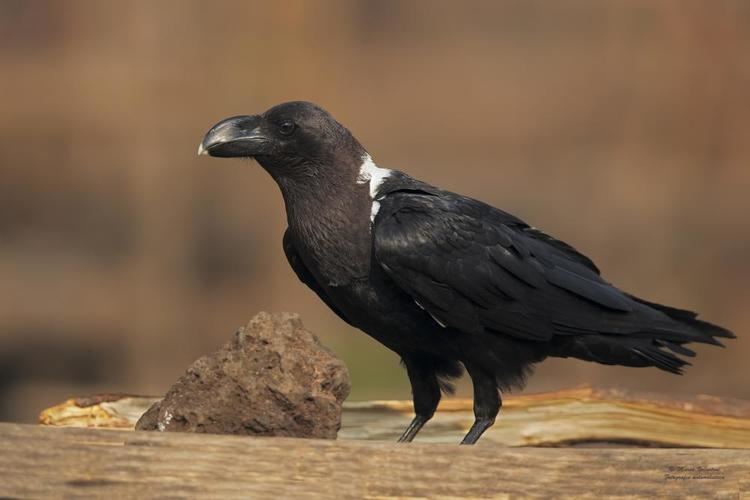 | ||
Similar Bird, Crow, Thick‑billed raven, Pied crow, Chihuahuan raven | ||
The white-necked raven (Corvus albicollis) is somewhat smaller (50–54 cm in length) than the common raven or indeed its nearest relative, the thick-billed raven C. crassirostris. Like the Common raven, Thick-billed raven and Brown-necked raven, it is one of the larger raven species. The smaller raven species are the Australian raven, Forest raven, Little raven, Fan-tailed raven and Chihuahuan raven with the Thick-billed raven being the world's largest raven species and the Chihuahuan raven being the smallest.
Contents
- White necked raven babble
- Description
- Measurements
- Vocalisation
- Distribution and habitat
- Behaviour
- References
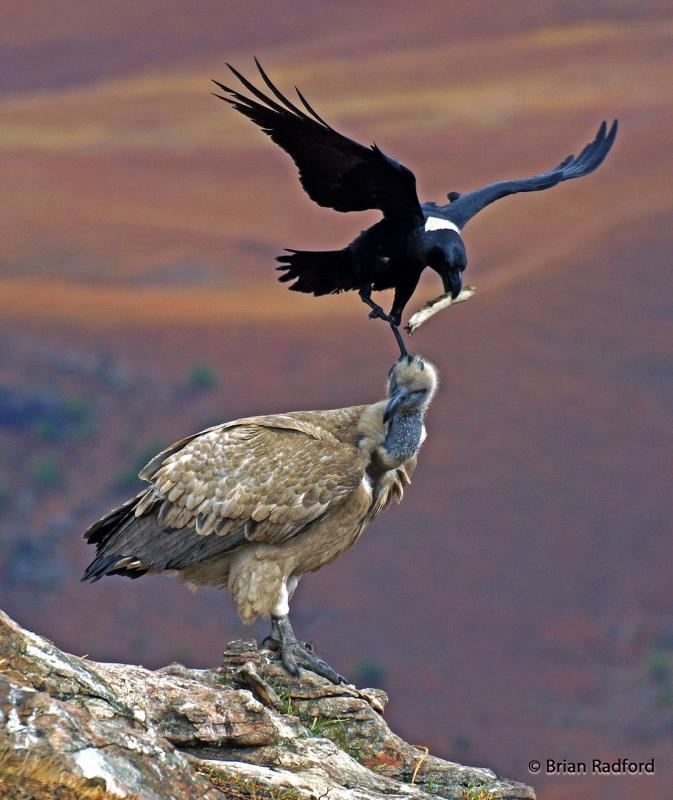
White necked raven babble
Description

The white-necked raven has a much shorter tail than the common raven, as well as a deeper bill with a white tip that is almost as strongly arched as that of the thick-billed raven. Though predominantly black, the throat, breast and neck show a faint purple gloss. There is a large patch of white feathers on the nape of the neck.
Soars well with shallower wingbeats than other Corvidae.
Measurements
Vocalisation
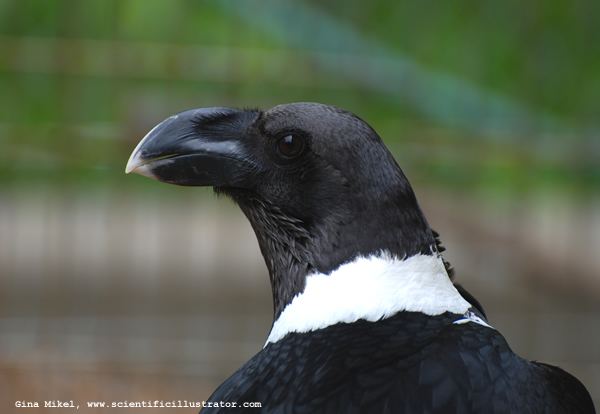
Often described as a raven with a sore throat, it has very similar calls to the common raven, but with a more husky note. It has a croak like the other raven species but with a more whispering note. Like all corvids, the White-necked raven is capable of vocal mimicry, however this behavior is only ever recorded in captivity.
Distribution and habitat
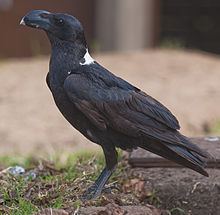
It occurs in eastern and southern Africa in open, mountainous country. It is quite commonly found in small towns and villages as long as there are mountains or hills for roosting and nesting relatively nearby.
Behaviour
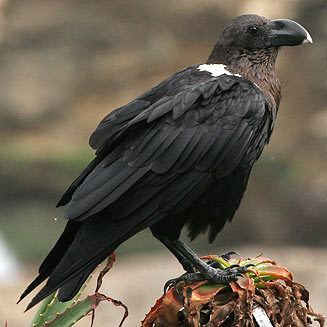
Most of this bird's food is obtained from the ground, but it will take food from trees as well. It has been seen to drop a tortoise from a height on to hard ground, preferably on rocks, and then swoop down to eat it, or even pick it up again if not sufficiently broken. White-necked ravens will also readily take carrion from road kills. Fruit, grain, insects, small reptiles, peanuts and human food are also readily taken and the bird forages in back yards and gardens quite openly. Like all or most raven species, the White-necked raven form flocks after leaving their parents and once fully matured will pair off and form territories. It is often found in the company of other scavengers such as kites or vultures.
Nests are bowls of sticks lined with grass, hair, and wool, found mainly on cliff ledges but occasionally found in trees. There are usually 3-5 eggs laid.
